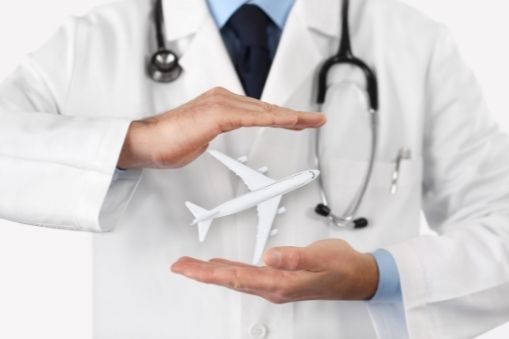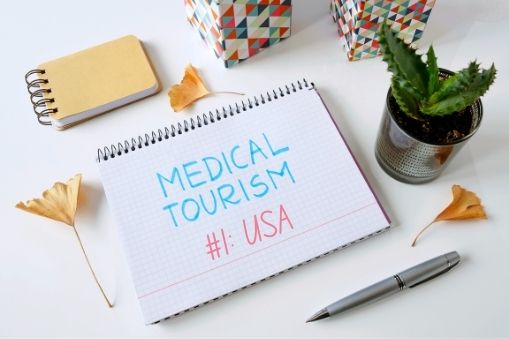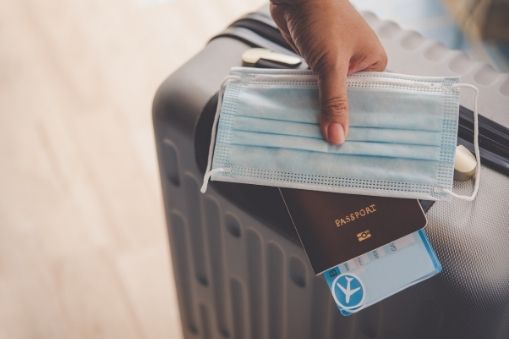Medical Tourism USA (During Covid-19)
For years, patients have travelled internationally to procure the very best healthcare possible. These patients seek value, not only in the quality of the care provided, but also in the potential costs saved in other facilities.
The cost of healthcare in the United States has long been a point of contention for citizens in the superpower country. With the onset of the pandemic though, citizens have had their proverbial financial legs cut out from under them even more so, with more than 5 million people losing their health insurance.
This further would have bolstered the need for medical tourism in other countries.
However, the pandemic reared its ugly, throwing a monkey wrench into any international healthcare plans that people may have had. International flights were suspended or cancelled, hampering the ability to travel for both healthcare professionals and patients alike.
Does this mean that medical tourism – both internationally and in the United States – is doomed?
Let’s take a look at some statistics, as well as some intangible factors, that could paint a bigger picture of US Medical Tourism in the Time of the Pandemic.
The State of Medical Tourism Statistics

General Medical Tourism Statistics
- Value
Medical tourism is a massive industry. In 2017, it was initially valued at upwards of USD $40 billion. It was estimated that it would grow by over 21% each and every year, from 2020 to 2027.
By 2020, the value is estimated to reach $54.4 billion. By 2027, this value will reach over $207 billion.
It is no surprise that medical tourism is continuing to grow and being sought out by people all around the world.
- The Number of Medical Tourists
Currently, it is estimated that there are 50 million medical tourists travelling around the world to seek healthcare. Researchers estimate that as each year passes, the number of medical tourists will increase by 25%.
Researchers state that over 60,000 citizens from the United Kingdom have sought care in other countries. Additionally, more than 50,000 people have sought care within the United Kingdom. This is only a small percentage of people that comprise the total amount of medical tourism practitioners.
A larger percentage can be seen from the United States, where a staggering 1.4 million citizens have travelled abroad for medical care.
- On Costs
On average, medical tourists spend anywhere from $3800 to $10,000 on average for each medical visit. While the price seems quite high, this is still a far cry from what American citizens spend for healthcare in their country.
US Medical Tourism Statistics

- Amount Saved
As stated many times previously, cost is an important factor for medical tourism. The question now is, how much do US citizens actually get to save when leaving the country? The percent saved hovers between 40 to 80%.
Let’s take the replacement of crowns as an example. A New York Times medical tourism article looked at the state of seeking care outside of one’s country.
A person was interviewed regarding the simple procedure of replacing crowns. The interviewee said that in Florida, it would have cost somewhere around $25,000. In Mexico, it was less than half of the cost at just $7,000. ‘
- Medical Tourism Destinations
Depending on the procedure sought, US citizens can go to a number of countries. While there are many to choose from, there are certain factors that come into play and help determine the country of choice.
There are several popular destinations for US citizens due to its proximity. These are Mexico, Costa Rica, and Panama.
Common procedures sought out by medical tourists in these countries include dentistry, plastic surgery, orthopedic surgery, fertility treatments, oncology, and ophthalmology to name a few.
The United States spends more money on its healthcare industry than any other country. Despite that, the country’s health outcomes do not reflect the amount of money being poured in. Their health outcomes are not any better than developing countries.
In terms of life expectancy at birth, infant mortality, unmanaged asthma, and unmanaged diabetes, the US leans towards the worst care provided. A rare instance where the US ranks highly is in heart rate mortality.
Why the US is Still a Prime Choice for Medical Tourism
Most of these pieces of data paint a bleak picture for healthcare in the United States. In terms of cost and healthcare outcomes, the United States is an aberration due to the amount of money put in and the outcomes produced.
Despite all this, there are still a few factors in play that make the US a prime candidate for healthcare. These factors are quality, choice, and innovation.
Quality
For starters, the quality of US healthcare has been ranked as 14th on the Index of Quality. This is generally not bad, as customer service, quick waiting times, and allowing for involvement in medical decisions are pretty good in the country.
Choice
Due to the United States’ access to cutting edge medical technologies, the country ranks first in terms of choice. The fact that the US has the best equipment and even procedures will always garner interest. When it comes to health, people want the best.

Science & Technology
Apart from choice, the US also ranked first in terms of Science & Technology. When it comes to new drugs tested and devices seeking approval, the US regularly churns them out more than any other country.
When it comes to awards, the US is in a commanding lead. They regularly win Nobel prizes in chemistry and other things. Furthermore, the research done in the country has a significant impact for healthcare all over the world.
These also translate to experimental treatments developed by pharmaceutical and biotechnology companies.
A Choice to Make
Healthcare is a very personal and dynamic choice. Seeking the right medical facilities or countries to go to vary greatly depending on the procedure and a person’s budget.
While the US is far from perfect when it comes to healthcare quality and costs, this doesn’t mean that it should totally be ignored. Despite the country’s shortcomings, the US has many reasons why people should be medical tourists there still.
If price is not a question, and you are seeking innovative healthcare, then consider being a medical tourist in the USA.


